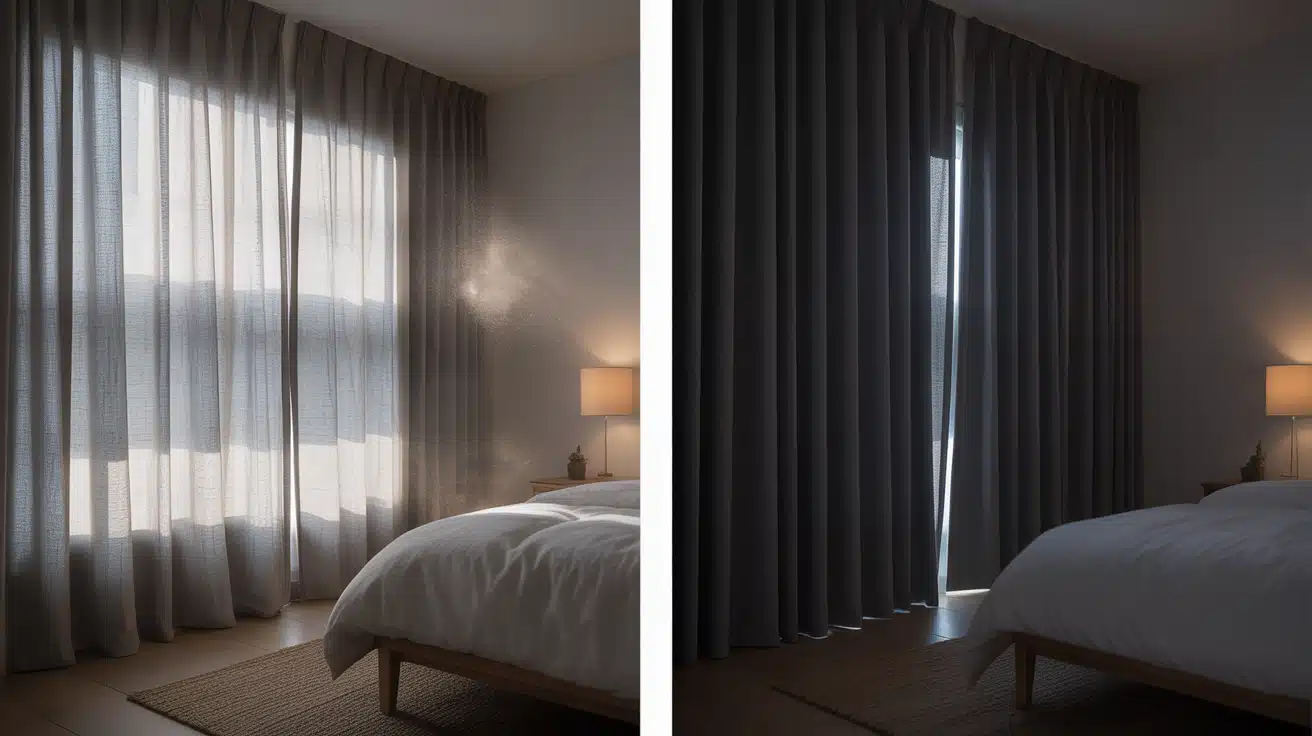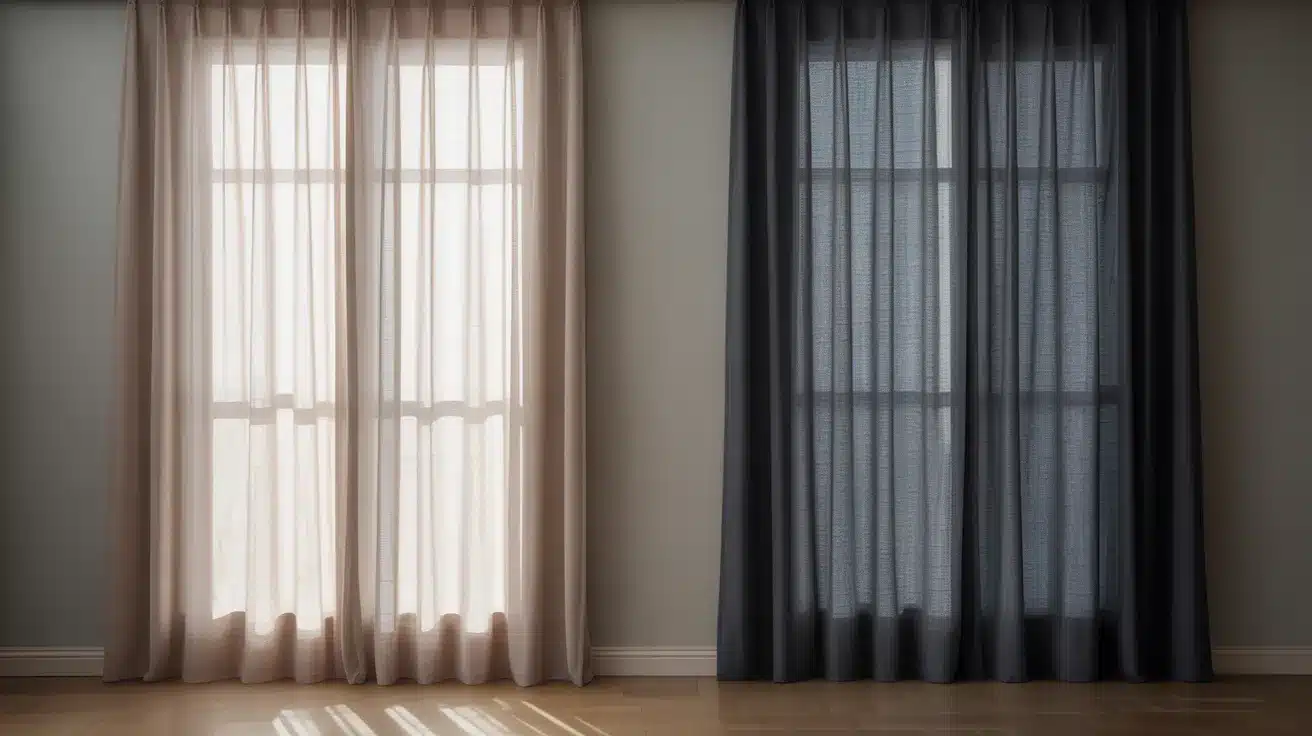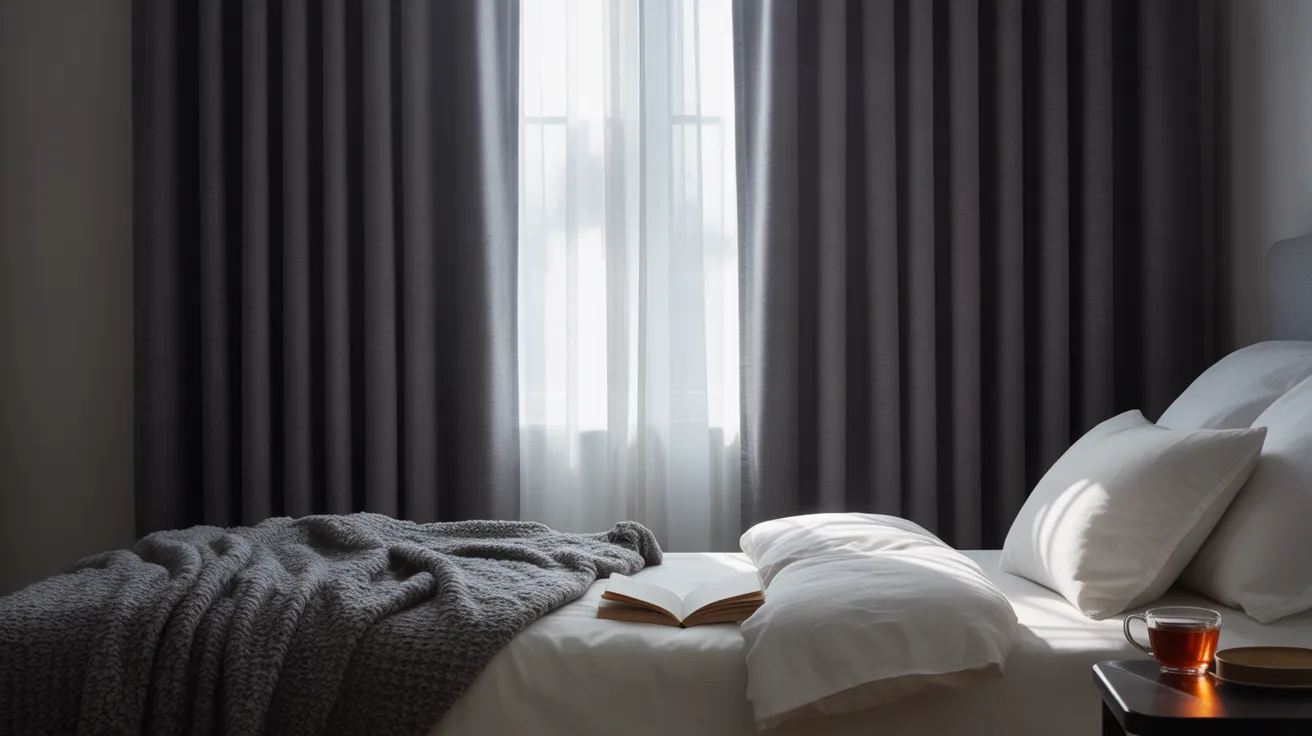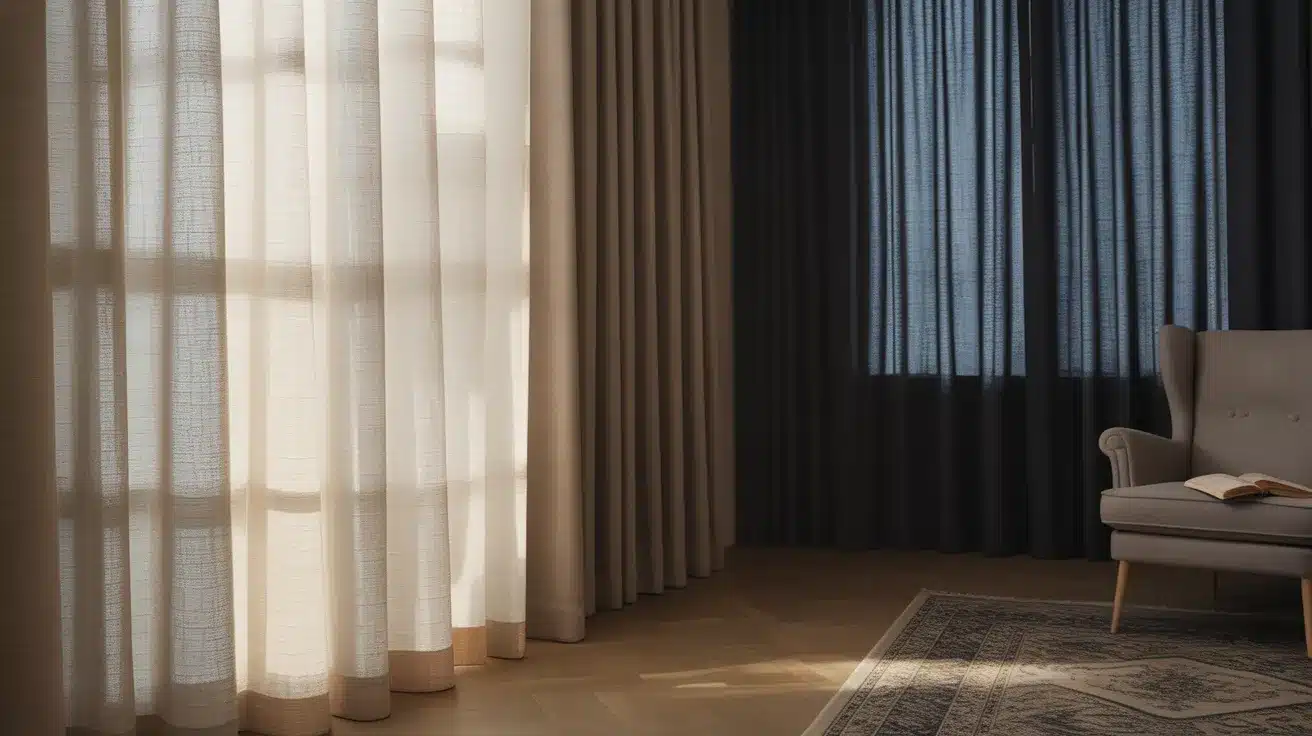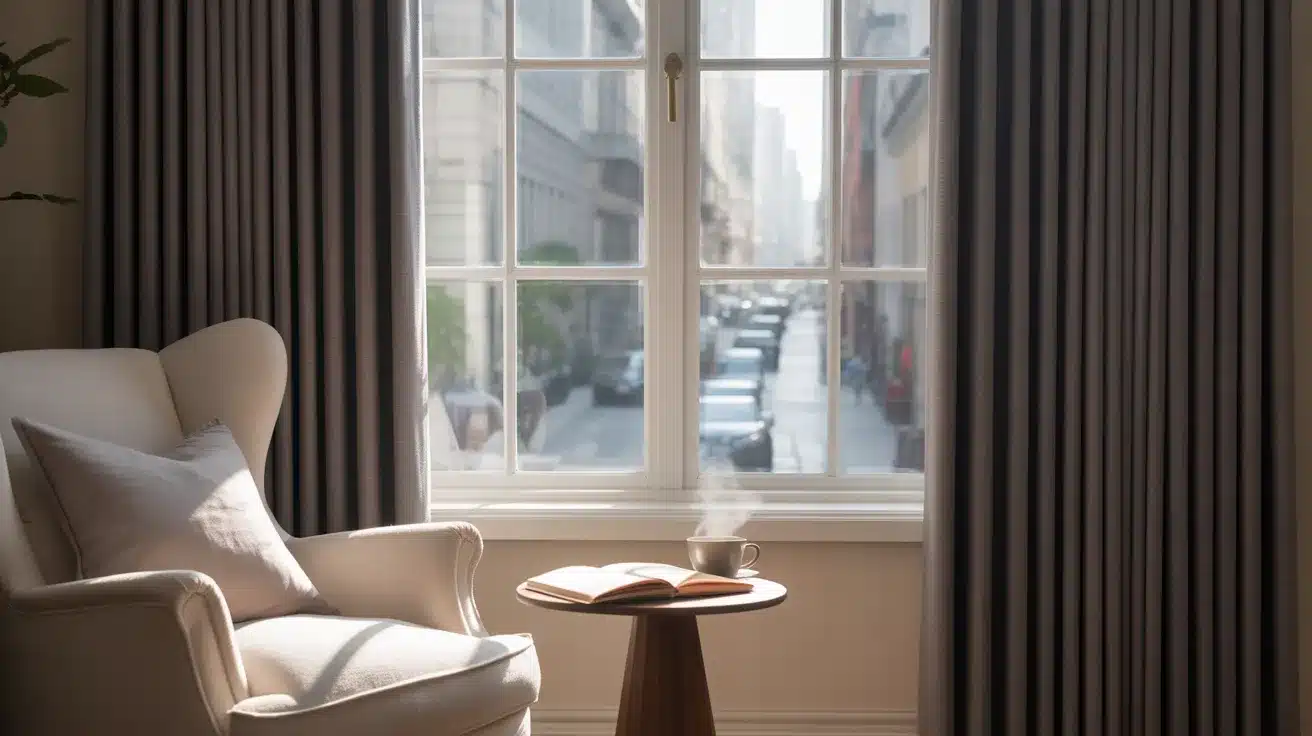Room Darkening or Blackout: Which Wins?
Do you toss and turn because morning light wakes you up too early? Or maybe you’re frustrated with glare on your TV screen during afternoon movies?
You’re not alone millions of people struggle with controlling light in their homes, and it’s affecting their sleep quality and daily comfort.
I promise there’s a simple solution that doesn’t require expensive renovations or complicated installations. The right curtains can transform your space and improve your sleep quality overnight.
In this guide, I’ll walk you through everything I’ve learned about room darkening vs blackout curtains from years of testing both types in my own home.
You’ll find which option fits your lifestyle, how much light each type blocks, and practical buying tips that will save you money and frustration.
What Are Room Darkening Curtains?
Many homeowners use room darkening curtains in their offices and living spaces because they provide light control without total darkness. These curtains block about 85% to 95% of sunlight by using tightly woven fabrics or special coatings on the back.
They work by filtering most light while allowing a soft glow to pass through.
People find them ideal for living rooms where you want to reduce glare on TV screens, home offices where bright sun can make computer work difficult, or nurseries where babies need dim light for daytime naps.
The key difference is that room darkening curtains give you privacy and light control while keeping your space from feeling like a cave.
What Are Blackout Curtains?
Blackout curtains are the heavy-duty option for achieving complete darkness in a room. Many people install these in their bedrooms, and they block 99% to 100% of light using thick, triple-woven fabrics or foam backing.
The mechanism is simple but effective; multiple layers of dense material create a barrier that stops light from passing through.
These curtains are ideal for bedrooms where total darkness is essential for quality sleep, home theaters where any light can ruin the movie experience, or for individuals who work night shifts and sleep during the day.
The thick construction also helps reduce outside noise and keeps rooms cooler in summer. If you’re someone who wakes up with the slightest bit of morning light, blackout curtains for sleep are a game-changer.
Key Differences: Room Darkening vs Blackout
After testing both types of curtains in different rooms, the differences are more significant than most people realize. Here’s what homeowners typically learn from experience.
Room-darkening curtains work like sunglasses for your windows. They filter most light but don’t create total darkness. Many people use these in living rooms where they want to reduce glare on TVs without making the space feel closed off during the day.
Blackout curtains are completely different. They’re like putting a thick blanket over your window. When people close blackout curtains in bedrooms, they can’t tell if it’s noon or midnight. The thick materials and special construction block virtually every ray of light.
Here’s how they compare side by side:
- Light Blocking: Room darkening blocks 85-95% while blackout blocks 99-100% of light.
- Materials: Room darkening uses light coatings on fabric, while blackout uses triple layers or foam backing.
- Cost: Room darkening costs $15-40 per pane,l while blackout costs $25-60 per panel.
- Weight: Room darkening feels lightweight and flows easily, while blackout hangs heavy and structured.
- Best Rooms: Room darkening works for living rooms and offices, while blackout suits bedrooms and media rooms.
- Style Options: Room darkening offers many colors and pattern,s while blackout has limited color choices.
Room Darkening vs Blackout: Pros & Cons
| Feature | Room Darkening Curtains | Blackout Curtains |
|---|---|---|
| Pros | Softer ambiance with some natural light – Budget-friendly – Aesthetic variety | Full light blocking – Noise and heat insulation – Ideal for restful, uninterrupted sleep |
| Cons | Doesn’t block light completely – Not ideal for total privacy or sleep needs | Less decorative flexibility – Higher cost – Can feel “too dark” for some preferences |
Which Curtain Type Is Best for Your Needs?
Choosing the right curtains depends on how you live and what each room needs. I’ve made mistakes with this before, so let me help you avoid them.
1. Based on Your Lifestyle
- Night Shift Workers: Blackout curtains are not optional; they’re necessary. My brother works nights at a hospital, and regular curtains left him tired and cranky. Once he switched to blackout curtains, he finally got quality sleep during the day.
- Light-Sensitive Sleepers: If you wake up with the smallest bit of light, blackout curtains will change your life. I used to wake up at 5 AM when the sun hit my window. Now I sleep until my alarm goes off.
- Parents with Babies: Room darkening works well for daytime naps because babies can still sense it’s daytime. For nighttime sleep, I recommend blackout curtains to help babies sleep longer and deeper.
2. Based on Your Room
- Living Rooms and Kitchens: Room-darkening curtains give you the best of both worlds. You can reduce glare on your TV without making the space feel like a cave.
- Bedrooms: Blackout curtains are essential. Sleep quality improves dramatically when your room is completely dark. Your body produces more melatonin in total darkness.
- Media Rooms: Blackout curtains are required. Even small amounts of light on your TV screen ruin the viewing experience.
3. Noise and Temperature Control
- Sound Blocking: Blackout curtains work as sound barriers. The thick material blocks street noise and traffic. My bedroom faces a busy street, and they cut the noise by about half.
- Energy Savings: Thick fabric keeps hot air out in summer and warm air in during winter. I noticed my electric bill dropped by 15% after installing blackout curtains in my south-facing bedroom.
- Insulation Benefits: Room-darkening curtains provide some insulation, but blackout curtains offer much better energy savings.
What to Check Before Buying?
- Light Block Rating: Always look for the percentage on the package – 85% means room darkening, while 99% means blackout.
- Size and Mount Type: Measure for ceiling-to-floor and wall-to-wall coverage because gaps around edges let light sneak through.
- Color Choices: Pick colors that match your room’s style, but remember darker colors block more light than lighter ones.
- Liner Options: Consider blackout liners that attach to your existing curtains if you want to keep your current style but add light blocking.
Conclusion
After years of experience with both room-darkening and blackout curtains, here’s what it comes down to: your choice should match your specific needs and lifestyle.
Room-darkening curtains work perfectly if you want light control without total darkness. Many homeowners use them in living rooms and offices where they need to reduce glare but still want a bright, welcoming space. They’re budget-friendly and offer tons of style options.
Blackout curtains are the way to go when you need complete darkness. Bedroom transformations happen overnight when people switch to blackout curtains – better sleep, lower energy bills, and no more early wake-ups from street lights.
The bottom line? Don’t settle for poor sleep or uncomfortable living spaces because of light issues. Whether you choose room darkening for flexibility or blackout for total control, the right curtains will improve your daily life more than you expect.
Ready to get better sleep and more comfortable living spaces? Start by measuring your windows and deciding which rooms need the most light control. Your future well-rested self will thank you.
Frequently Asked Questions
Can You See Through Room-Darkening Shades?
No, you can’t see clear details through room-darkening shades, but they’re not completely opaque like blackout curtains.
What Are the Disadvantages of Blackout Blinds?
Blackout blinds cost more, offer fewer style choices, and can make rooms feel too dark or cave-like during the day.
Can You See Through Room-Darkening Curtains at Night?
Room-darkening curtains provide good privacy at night, but some light and shadows might still be visible from inside rooms.

